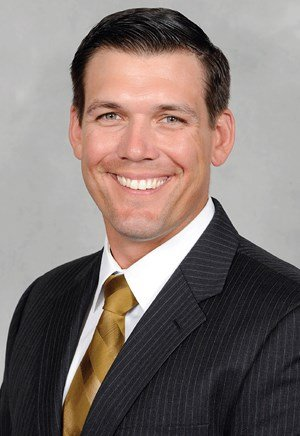Corey Muscara Interview: Winter Break Training for Baseball Pitchers
pitchLogic: What are some of the challenges you face when it comes to your pitching staff during the winter break?
Muscara: “The two biggest challenges are knowing how much work the guys are doing during the break and the quality of their throwing.
When you send guys away, you're just not sure how much they're throwing. There are some inclement weather issues for the majority of our roster. Sometimes guys had to throw in a gym, into a net, or some even put up a sheet in their basement and tried to throw into it.
The problem with that is, you need to build arm strength and distance, and it's really challenging to do so. When throwing into a net, players don't really know how far they're throwing. They're just guessing. Even if you are in a place where the weather's really good, you may not have somebody to throw with. For us, the more we chart things, the more we're aware of it, the more we can see progress, and the more we know where each player stands.
Well, if you have a pitchLogic ball, there's no excuse. You can do long toss and on-ramp properly.
This is gold, because what we find on arm injuries in general, is that most of them occur at the beginning of the season. And because they haven’t on ramped properly, they haven't built enough base in their throwing, and they haven't built up the distances.
Another challenge is being focused in catch play. And, one of the things I say all the time is the ball don’t lie. The ball tells you everything. It tells you what your pitch strategy should be, how you're moving, and the axis of the ball. We get this information when we're throwing bullpens with all the technology we have, but we don't really get this information in catch play. The reality is, if you can get consistent in catch play, you will get more consistent in the bullpen.
If you can have actionable feedback, when you're playing catch, in theory, it'll be more automated on the mound. There's value when you're done throwing to go back and look and be like, alright, I made 50 throws today, of my 50 throws, I had 45 of them above 98% efficiency. My spin direction was pretty consistent on 45 of them. To me, that's the stuff that's actionable. If a player isn’t there yet, they can see where they need to make adjustments.”
pitchLogic: When you heard about pitchLogic, you decided to incorporate it into your on-ramp program. What specifically interested you most?
Muscara: “Definitely the ability to throw distance or long toss indoors where players have inclement weather. The other two biggest factors were the ability to help in preventing bad habits and managing pitch usage.
I'm from New Hampshire. So, I understand the problems with the winter weather and I love long toss. It's like one of my fundamental beliefs in being a thrower is you have to learn how to self-organize and regulate your body in long toss. So that's number 1.
Number 2 was, I'm a big believer in ‘How you do anything, is how you do everything.’ I want players to create good habits in all reps. When you throw weighted plyo balls, they're great. They help arm action and arm patterning, but what happens oftentimes is you start to cut the ball and you get gyro spin, because there are no seams. They’re smooth plastic.
So, if you can know that you're still centering the ball playing catch, it takes it to the next level.
The third thing that was interesting for me, comes into play when you talk about pitch usages. Guys throw in catch play 1,000 or 1200 balls a week, but they may only throw like 40 breaking balls, and then in a game you want them to have a 40% usage of a breaking balls. How do you expect to have command and feel? If you really want to get consistent, you do the same thing every day. If you're going to throw 100 balls, have your usage percentages be indicative of pitch usage in a game. And, track it. I think there's value there.”

